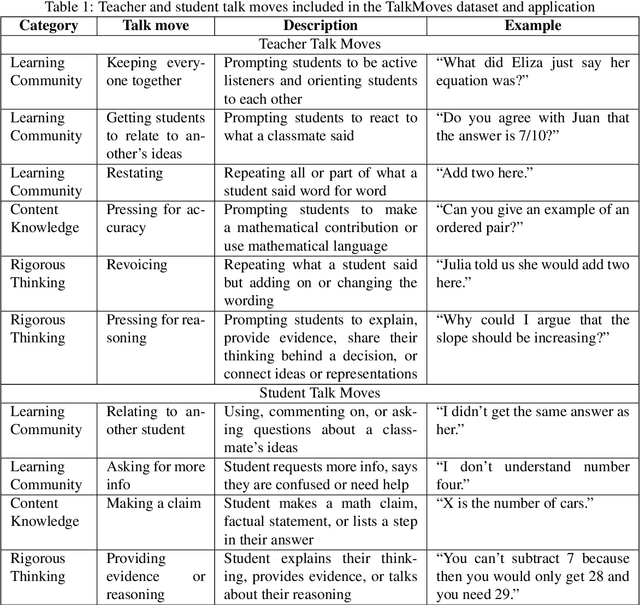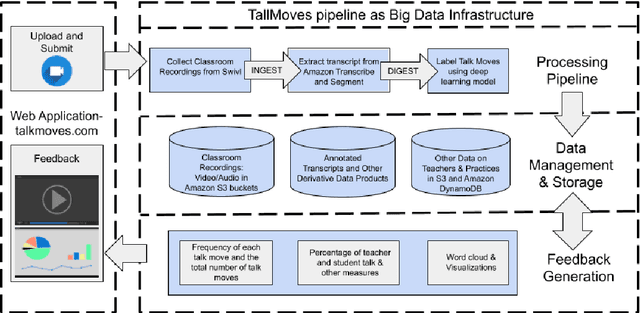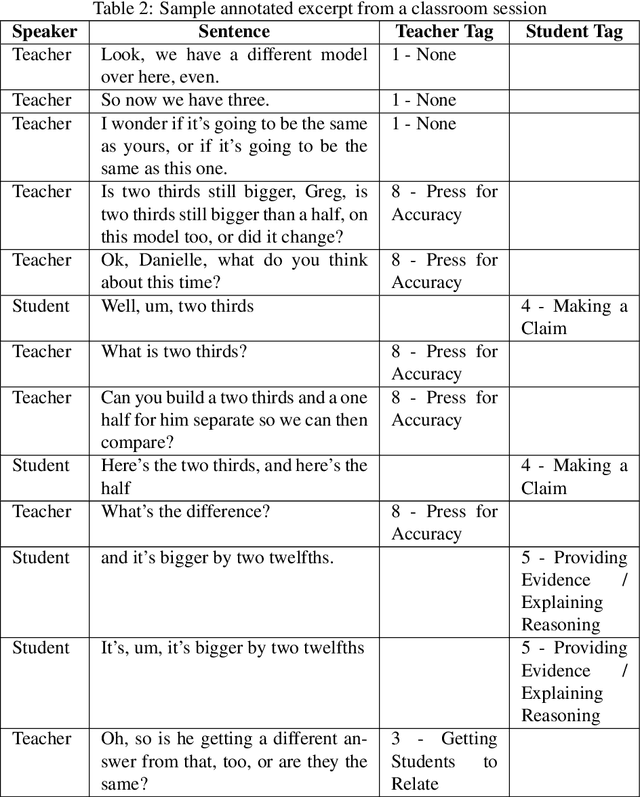Margaret Perkoff
Dependency Dialogue Acts -- Annotation Scheme and Case Study
Feb 25, 2023Abstract:In this paper, we introduce Dependency Dialogue Acts (DDA), a novel framework for capturing the structure of speaker-intentions in multi-party dialogues. DDA combines and adapts features from existing dialogue annotation frameworks, and emphasizes the multi-relational response structure of dialogues in addition to the dialogue acts and rhetorical relations. It represents the functional, discourse, and response structure in multi-party multi-threaded conversations. A few key features distinguish DDA from existing dialogue annotation frameworks such as SWBD-DAMSL and the ISO 24617-2 standard. First, DDA prioritizes the relational structure of the dialogue units and the dialog context, annotating both dialog acts and rhetorical relations as response relations to particular utterances. Second, DDA embraces overloading in dialogues, encouraging annotators to specify multiple response relations and dialog acts for each dialog unit. Lastly, DDA places an emphasis on adequately capturing how a speaker is using the full dialog context to plan and organize their speech. With these features, DDA is highly expressive and recall-oriented with regard to conversation dynamics between multiple speakers. In what follows, we present the DDA annotation framework and case studies annotating DDA structures in multi-party, multi-threaded conversations.
* The 13th International Workshop on Spoken Dialogue Systems Technology
The TalkMoves Dataset: K-12 Mathematics Lesson Transcripts Annotated for Teacher and Student Discursive Moves
Apr 06, 2022



Abstract:Transcripts of teaching episodes can be effective tools to understand discourse patterns in classroom instruction. According to most educational experts, sustained classroom discourse is a critical component of equitable, engaging, and rich learning environments for students. This paper describes the TalkMoves dataset, composed of 567 human-annotated K-12 mathematics lesson transcripts (including entire lessons or portions of lessons) derived from video recordings. The set of transcripts primarily includes in-person lessons with whole-class discussions and/or small group work, as well as some online lessons. All of the transcripts are human-transcribed, segmented by the speaker (teacher or student), and annotated at the sentence level for ten discursive moves based on accountable talk theory. In addition, the transcripts include utterance-level information in the form of dialogue act labels based on the Switchboard Dialog Act Corpus. The dataset can be used by educators, policymakers, and researchers to understand the nature of teacher and student discourse in K-12 math classrooms. Portions of this dataset have been used to develop the TalkMoves application, which provides teachers with automated, immediate, and actionable feedback about their mathematics instruction.
 Add to Chrome
Add to Chrome Add to Firefox
Add to Firefox Add to Edge
Add to Edge